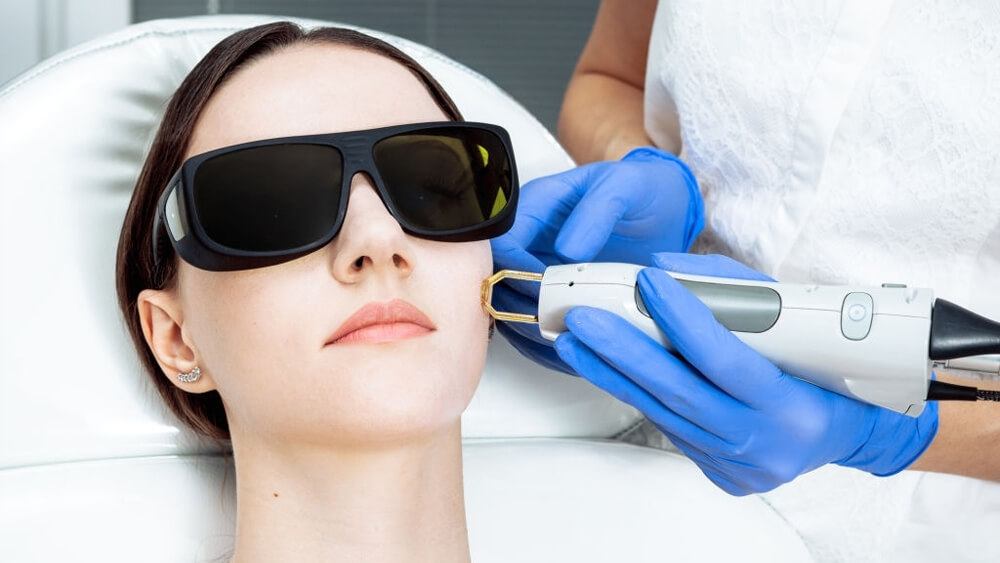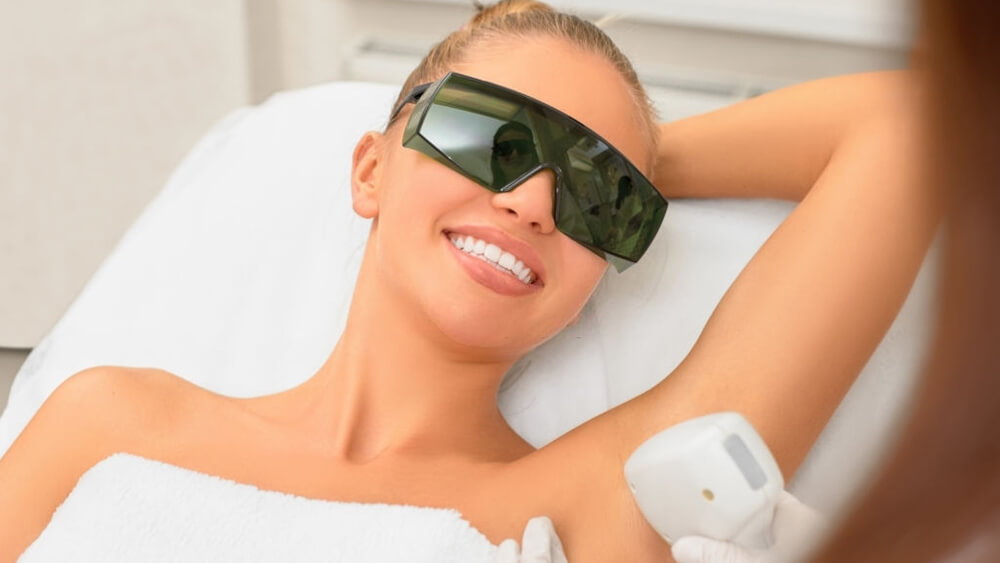Intense pulse light or IPL is not a laser, but xenon flash lamps that produce multi-wavelength and non-coherent light that can have various effects on different skin structures and can be selected by choosing the appropriate filters to achieve the desired effect for specific purposes. IPL method is popular for rejuvenating the skin and brightening facial blemishes, as well as the surface effects of facial pimples or acne. The IPL device is not a laser device but has the same performance with cheaper and faster operations.

Skin rejuvenation with IPL device
IPL skin rejuvenation is the most effective treatment among all options. IPL can treat many skin diseases at the same time. This limelight IPL treatment is effective on the redness of the skin caused by blood vessels and colored spots such as freckles and those caused by aging and sunlight. IPL also treats the neck and arms, which are often more prone to sun damage. You can use IPL method to treat large areas of your skin and return to your daily activities in a short time. The results of skin rejuvenation with IPL device will remain for a long time, however, the limelight of your skin may fade a little.

Who are not good candidates for using IPL devices?
If people are in any of the following conditions, they are not a good candidate for IPL treatment:
- People with uncontrolled diabetes
- People with very sensitive skin
- People who use anticoagulants
- People with cancers and malignant tumors, especially skin cancer
- People with extreme sensitivity to sunlight
- People who use body bronzers
- Pregnant women
- People with a history of herpes and other infectious skin diseases
- People with a history of light-sensitive seizures
Steps of treatment with IPL
The dermatologist will determine a specific treatment plan for each patient based on the type and severity of the problem. On average, four to six sessions of treatment are recommended over three weeks. Each session usually lasts 20 minutes and the patient returns to normal activity immediately. With IPL, the result of natural treatment and its longevity will be long before losing its limelight. Before starting treatment, a layer of cold gel is usually rubbed on the area and the patient wears goggles.
During the treatment, the doctor moves the handpiece gently on the skin. The light reaches the skin in small pulses usually without discomfort. Sometimes the effects of treatment, such as redness, fade away in an hour or two.

Complications and side effects of IPL
Redness and burning in the treated area can occur up to a few hours after IPL treatment. However, sometimes the skin suffers from burns. To prevent this side effect, it is recommended not to sunbathe or use a solarium two weeks before treatment. It is not recommended to perform skin treatments such as Microneedling and Botox alongside IPL on the same day.
What is the Limelight facial?
Limelight is a new method that focuses on improving skin tone, fine lines and skin surface imperfections. It can also be used on any part of the face, neck and upper torso to correct redness of the skin, small visible veins and brown spots. Even the most difficult skincare problem following a Limelight facial procedure has shown dramatic improvements. Limelight is done using a device to transmit the pulse of light to the treatment area. Patients may feel only a slight scratching or tingling sensation, but a cooling gel is used to minimize any discomfort.
These feelings are mild enough that anesthesia and painkillers are not necessary for most patients. Most Limelight treatments take less than an hour, although the length of time depends on how much treatment you have. Many patients see the desired results during one to three sessions of the limelight.
What do I expect after a Limelight facial?
After receiving Limelight treatment, you may experience excessive darkening of your color at first. The surrounding tissue may look a little red and feel more sensitive. Any discomfort usually subsides after a few hours. Dark areas turn brown and usually disappear after about 7 to 14 days.
Downtime as well as the number of treatments required by the patient varies. Depending on the depth of melanin in the skin, even after treatment may see significant results. Others may need a series of three Limelight treatments to achieve the same result.
What is the difference between the limelight and IPL?
Limelight treatment is a more focused type of IPL that uses green light to target the skin specifically its tone and color. IPL however, should not be confused with lasers. While lasers also use intense light and heat to treat unwanted skin problems, they are composed of a wide range of light wavelengths.
Limelight is not a typical IPL. The illuminator in limelight method is unique in its design because it makes pulsed light much more specific to the conditions in which it is being treated. Moreover, limelight can switch between modes and wavelengths for different skin types and severity.
Limelight safety features
Unlike many IPL devices, each Limelight shot is computer-controlled to tightly control energy levels, thus avoiding the risk of being treated or burned. In addition, Limelight’s ability to adjust the light spectrum to your skin type makes the technology safer. Other machines increase energy to get to a difficult area, while Limelight technology changes the actual light band so energy does not need to be increased and the risk of burning is low.


